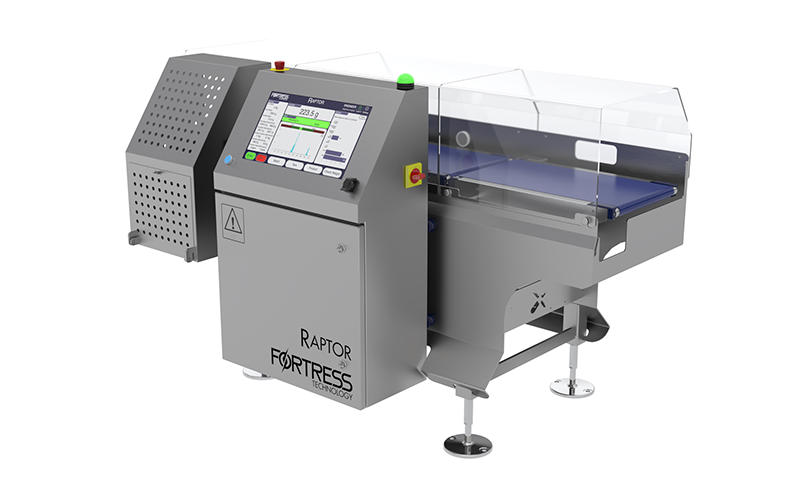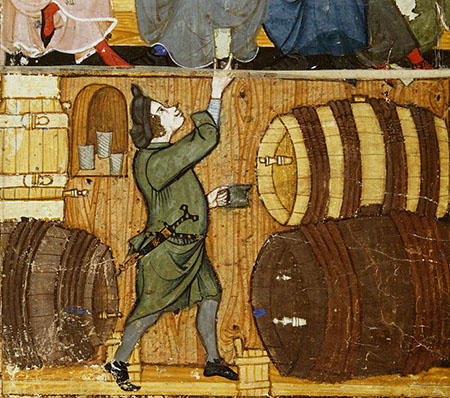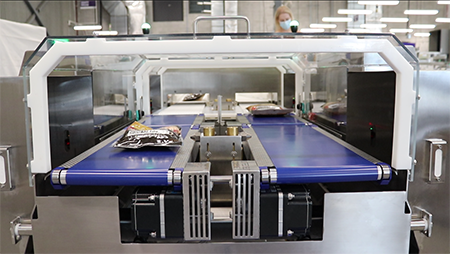
Fortress Technology explores why we have always needed weighing technology throughout food production history. From manual weight checks using balance scales to advanced automated checkweighing systems, European sales director Phil Brown delves into their origins, how the technology evolved and why these machines will continue to remain integral to trading standards, consumer rights, brand protection and quality control.
Weighing in on checkweighers
The top priority for any food manufacturer is to deliver high quality food products that are safe for human consumption. In today’s rapidly evolving food sector, processors face intense competition, changes in consumer trends and purchasing patterns and stricter regulatory pressures, as well as fluctuating ingredients costs and ever-expanding product SKUs.
One thing’s for certain: consumers no longer tolerate inconsistences in their food products, and neither does the UK Food Standards Agency (FSA). The consequences of a food pack containing an amount that’s different to what is stipulated on the packaging can be serious, particularly for consumers of weight loss, ‘free-from’ and infant foods. Detrimental effects can range from costly, brand-damaging recalls to adverse, life-threatening reactions that could shut down a food business. In regions where weights and measures standards are stricter, knowingly distributing underweight products could be deemed fraud.
The current industry’s emphasis on optimising productivity and increasing sustainability has led to overfilling – a method typically used by manufacturers to avoid falling foul of weight legislations – being regarded as a wasteful and uneconomical practice. Now more than ever, it is imperative that food manufacturers utilise highly-sensitive, smart checkweighing technology to improve their production processes, protect consumer health and safety and gain a competitive edge in the rapidly expanding food industry.
How the rules evolved
Throughout the ages, weighing scales and weights and measures legislations have played a crucial role in agriculture and food production. The earliest known scales used in food trade were called balance scales. These were found in Ancient Rome and Egypt and were used to determine the weight, and subsequent value, of merchants goods. The food product would be placed on one pan with weights added to the other until the two pans were balanced, indicating the food’s value.
Weights and measures regulations are also far from new. Historical references to food quality management date as far back as 1266, when the Assize of Bread and Ale in medieval England regulated the price, weight and quality of bread and beer. King John of England and the rest of the UK parliament designed this law to prohibit the sale of ‘unwholesome’ food. Fines for overcharging on bread were huge. As a result, bakers regularly gave away extra loaves to ensure they complied.

During the next centuries, cases involving the adulteration of food and drink continued to rise. The only attempts at establishing regulations were conducted by Guilds in major cities, with the intention to protect the market rather than the consumer.
At the turn of the 19th century, during the Industrial Revolution, adulterated food continued to be serious issue. Mostly coinciding with rapid urbanisation. Plaster, pipe clay and even sawdust was added to bread loaves to increase weight. In the 1860s, Dr Edward Lankester delivered a lecture claiming 87% of bread and 74% of milk sold in London was adulterated. This led to a general food safety law being passed; the Adulteration of Food and Drink Act. This new law made it an offence to knowingly sell food that contained ingredients that endangered public health or were not fit for human consumption.
For the first time ever in the UK, the Sale of Food and Drugs Act of 1875 determined that the inclusion of ingredients would have to be distinctly and legibly written or printed on the food’s label. Later revisions of this Act introduced penalties for misleading or false advertising. These were all deemed precursors to today’s food safety and weights and measures laws.
The Industrial Revolution introduced mass production, resulting in huge technological advances. Invented during in 18th century, spring scales – the first mechanical weighing scales – were commonly used in agriculture and food processing. For weighing heavier loads e.g., sacks of grains, platform scales were developed, utilising a leaver and counterbalance system.
As population growth skyrocketed, automated food production processes has led to the type of mass production evidenced today. The first automatic weighing systems were developed in the mid-1900s, reducing the reliance on manual labour and increasing efficiency and accuracy.
Advances in technology led to the creation of electronic scales, featuring electro-mechanical sensors called load cells and relying upon a strain gauge to measure weight. Before automatic electronic checkweighing equipment became easily accessible, many food companies used a single electronic scale to check the weight of a sample from each batch. Although this can help maintain compliance, by default it will never be as robust as an automatic checkweighing system, which will verify the weight of 100% of all packs being inspected. On today’s processing lines, it is widely regarded as good manufacturing practice to weight check every single product.
Now, automated electronic checkweighing systems are the most widely used weight check technology within the food industry. Recognised for their precision, reliability and efficiency, the enhanced capabilities of these modern inspection systems have the ability to elevate food safety, quality management and brand protection to a whole new level.
When combined with remote monitoring, data collection software and automated verification procedures, these systems have the ability to enhance traceability, simplify tracking upstream portion control issues, reveal hidden productivity gains and drive untapped ROI.

Checkweighing in tomorrow’s world
The global market outlook for automatic checkweighers is strong. Valued at US$ 260 million in 2023, it is predicted to grow annually by 4.3%, reaching US$ 400 million by 2033. The European market is expected to expand rapidly during this timeframe, attributed primarily to the demand for automation that boosts productivity and reduces expenses.
Modern checkweighing systems have refined their processes far beyond simply achieving high speeds and accurate weight checks. When optimised to best support a manufacturers’ production needs, the upfront cost of a checkweighing system provides a quick return on investment. Current checkweighing technology has advanced to the point of alerting operators of inaccuracies in the filling process, communicating the need to adjust non-conforming upstream portion control equipment directly.
The need for transparency is now prevalent across the entire food supply chain, with food companies required to incorporate extensive breakdowns of their products origins, processes, nutritional information, etc. for customers to easily access and review before making purchases. Checkweighers are instrumental to building trust between consumers, manufacturers, retailers and regulatory bodies, by ensuring quality standards are adhered to throughout the entire production process.
Additionally, they are extremely versatile items of equipment. When combined with metal detection, X-ray and even vision inspection, they can guarantee a robust food safety and quality assurance solution, bolstering each other’s respective strengths.
By utilising a range of complementary food safety and quality control equipment, manufacturers can maximise their efficiency and guarantee high-quality products safe for human consumption.













